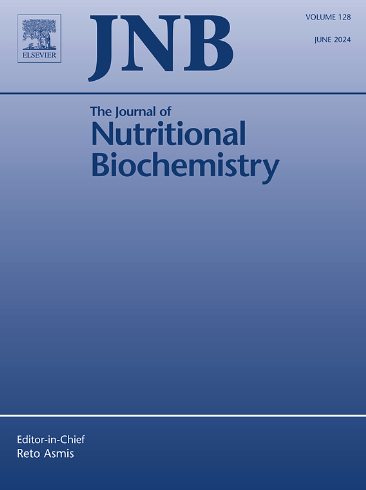Policosanol ameliorates Post-Myocardial Infarction-induced neuronal damage and cognitive impairment in rats via suppressing miRNA-1
IF 4.9
2区 医学
Q1 BIOCHEMISTRY & MOLECULAR BIOLOGY
引用次数: 0
Abstract
Heart-brain interaction is widely highlighted as a contributor to several cardiovascular and neurodegenerative diseases. Great interest has been focused on miRNAs as one of the possible molecular mechanisms of heart-brain interaction. Therefore, we aimed to investigate the potential neuroprotective effects of policosanol (POL), a commonly used hypocholesterolemic agent, versus cognitive impairment and neuronal damage in a post-myocardial infarction (MI) rat model. Additionally, we aimed to explore the molecular mechanisms through which POL may ameliorate this damage through its effects on miRNA-1 and its target genes. Post-MI-induced neuronal damage was induced in rats by isoproterenol (ISO) (100 mg/kg) given as two subcutaneous injections separated by 24-h interval. Then, rats were treated with POL (50 mg/kg/day, orally) for 4 weeks. Post-MI-induced cognitive dysfunction was characterized by the increased locomotor activity and the decreased spatial cognition ability in Y-maze test. Hippocampal miRNA-1 expression was increased following MI and thereby, the hippocampal BDNF mRNA expression along with its contents of TrkB and CREB were decreased. Additionally, the hippocampal FZD7 mRNA expression along with active β-catenin and NeuroD1 contents were decreased. Moreover, the cortical mRNA expression of HSP70 and its contents of TPPP/P25 and BCL-2 were decreased, but cortical contents of BAX and caspase-3 were increased. Treatment with POL ameliorated these changes resulting in the alleviation of the post-MI-mediated neuronal damage and cognitive dysfunction. Our findings suggest a novel insight into one of the possible molecular mechanisms of POL neuroprotective effects versus Post-MI-induced neuronal damage and cognitive impairment at the miRNA level.

多酚通过抑制miRNA-1改善大鼠心肌梗死后神经元损伤和认知功能障碍。
心脑相互作用被广泛强调为几种心血管和神经退行性疾病的贡献者。mirna作为心脑相互作用的可能分子机制之一,引起了人们的极大兴趣。因此,我们的目的是研究胆甾醇(POL)(一种常用的降胆固醇药物)对心肌梗死(MI)后大鼠模型的认知障碍和神经元损伤的潜在神经保护作用。此外,我们旨在探索POL通过其对miRNA-1及其靶基因的影响来改善这种损伤的分子机制。用异丙肾上腺素(ISO) (100 mg/kg)皮下注射,每隔24小时注射两次,可诱导mi后神经损伤。然后给予大鼠POL (50 mg/kg/天,口服)治疗4周。脑损伤后认知功能障碍表现为运动活动增加和空间认知能力下降。心肌梗死后海马miRNA-1表达增加,海马BDNF mRNA表达减少,TrkB和CREB含量降低。海马FZD7 mRNA表达减少,活性β-catenin和NeuroD1含量降低。皮层HSP70 mRNA表达量及TPPP/P25、BCL-2含量降低,BAX、caspase-3含量升高。POL治疗改善了这些变化,从而减轻了mi后介导的神经元损伤和认知功能障碍。我们的研究结果在miRNA水平上对POL神经保护作用对抗mi后诱导的神经元损伤和认知障碍的可能分子机制之一提出了新的见解。
本文章由计算机程序翻译,如有差异,请以英文原文为准。
求助全文
约1分钟内获得全文
求助全文
来源期刊

Journal of Nutritional Biochemistry
医学-生化与分子生物学
CiteScore
9.50
自引率
3.60%
发文量
237
审稿时长
68 days
期刊介绍:
Devoted to advancements in nutritional sciences, The Journal of Nutritional Biochemistry presents experimental nutrition research as it relates to: biochemistry, molecular biology, toxicology, or physiology.
Rigorous reviews by an international editorial board of distinguished scientists ensure publication of the most current and key research being conducted in nutrition at the cellular, animal and human level. In addition to its monthly features of critical reviews and research articles, The Journal of Nutritional Biochemistry also periodically publishes emerging issues, experimental methods, and other types of articles.
 求助内容:
求助内容: 应助结果提醒方式:
应助结果提醒方式:


